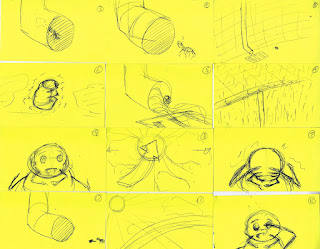Comic Art
Category Description
A pictorial narrative in deliberate sequence—with or without
text—that tells a story or develops an idea through use of a single or
multiple panels.
Examples (including but not limited to) Comic strips, comic books, storyboards, web comics, or selections from graphic novels.
Special Instructions Do not base characters and plots on already published comic books or published series.
Submissions You can upload up to eight images for each Comic Art submission. We highly recommend that you enter any text in the field provided on the upload page. Each image has its own field in which you can enter text. This will ensure jurors can read your work during judging.
Click here to see examples of previous works in this category.
(This will open in a new tab)
Examples (including but not limited to) Comic strips, comic books, storyboards, web comics, or selections from graphic novels.
Special Instructions Do not base characters and plots on already published comic books or published series.
Submissions You can upload up to eight images for each Comic Art submission. We highly recommend that you enter any text in the field provided on the upload page. Each image has its own field in which you can enter text. This will ensure jurors can read your work during judging.
Click here to see examples of previous works in this category.
(This will open in a new tab)
Additional Instructions
If your submission consist of more than one page, please
indicate how many pages are in your submission in the space provided
above.
Work Type
2-D Work (Height x Width)



































